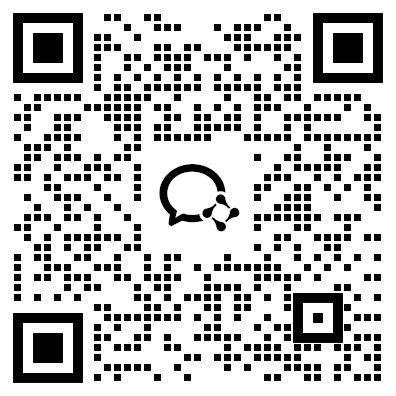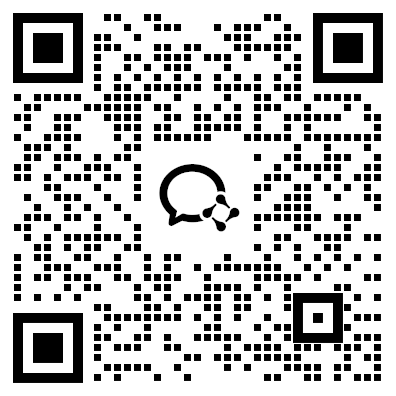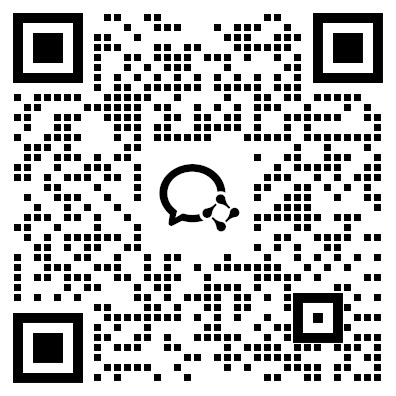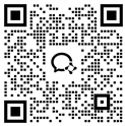选课中心NEW
7099人选课
SAT【0】元讲座
免费学
托福【0】元讲座
免费学
SAT模考网站HOT
39209人预约
托福备考练习HOT
39209人预约
SAT辅导课程NEW
免费报名
AP辅导课程NEW
立即报名
中学生托福课程NEW
立即报名
大学生托福课程NEW
立即报名
【定制】1v1
私人订制
【资料】考前冲刺
精

扫码添加助教
免费领取
备考资料大礼包

扫码关注公众号
下面新东方小编为大家整理的SAT阅读材料文章,供大家学习,大家平时也可以多关注和积累相关的时事新闻,自己搜集整理一些比较好的SAT阅读考试素材,帮助自己更好地备考SAT阅读考试。以下是详细内容。
A Brief History of Western Music
Western music is generally broken down into six periods. Each of these periods have certain characteristics which have shaped it and remained with it throughout its duration. However, lesser characteristics may change within any given period, and so you have works which fall into, say, the early Romantic period as opposed to the late Romantic.
The Medieval Period (400-1400)
Prior to about 900, nearly all the music we have any record of is a simple, one line structure called a plainchant. This was made up of one melodic line sung in unison by everybody. More complex music existed, but as it was secular and not sacred, we have very few, if any, written accounts of it.
Gradually, over the next 500 years, people began to expand on this simple structure by adding voices. At first, these voices sung a fixed interval1 above or below the original line. This was called an organum.
At some point, someone got the idea of having two different lines moving at the same time but not having a fixed interval. Usually the higher of these lines would be fairly florid, while the lower was a slower, pre-existing plainchant2.
By 1300, three and four voice compositions were being written. These works are referred to as polyphonic (many voices), to distinguish them from the monophony (single voice) of the simple plainchant.
The Renaissance (1400-1600)
By 1400 or shortly thereafter, several composers were writing polyphony in a slightly different way. Instead of using a slower bottom voice and faster upper voices, they made all voices equal in rhythmic variety. And instead of using four different chants, they used a single chant which was stated in each of the voices, upon their entrance, and the developed differently from one voice to the next. This led to a more unified sounding work, and gave rise to a number of contrapuntal (note-against-note) forms, such as the Canon (exact repetition in all the voices), the Canzon (a succession of themes, each developed and then discarded3), and the Fugue (one theme developed extensively).
Most of the development during this period was made in Italy. This is only natural as the Catholic church was the dominant force during this period, and was headquartered in Rome. Many of the best musicians wrote masses and other works for the church; nearly all of these works are in Latin, as this was the language used for services at the time. However, with the Reformation and rise of Protestantism in the latter half of the 16th Century, the nature of music had to change.
The Baroque Period (1600-1750)
One of the major changes in daily life around 1600 was the switch from the Catholic church to various Protestant religion4. The result of this change was that the language of the services switched from Latin to German. Because most people had not spoken Latin, the masses could be as ornate as the composer desired. But if the language was understandable by the majority of the people, the music should be simple enough that they could understand the words. As a result, the Catholic Latin mass was no longer needed, but new German services were. New hymns (chorales) were written to provide music for these services. These were primarily homophonic (simple chordal structure) in nature, contrasting with the polyphony that continued in instrumental and Latin works.
美国残疾人法案(英语:Americans with Disabilities Act of 1990)是由美国国会在1990年7月通过的一项法案,经由老布什总统签署生效。2008年小布什总统又签署了残疾人法案修正案,这些修正案在2009年1月1日生效。它规定了残疾人所应享有的权利,特别是就业方面不应受到歧视。残疾人法案修正案还明确规定了主要生活行为与实质限制等词汇的含义。
Since our earliest days, America has measured its progress not only by the growth of our borders and the breadth of our economy, but also by how far we reach toward fully realizing the fundamental rights, protections, and freedoms afforded to each of us by our Nation's founding documents. For generations, many Americans with disabilities lived as second-class citizens who were denied those most basic opportunities. Not content to accept the world as it was, they marched and organized and testified, coupling quiet acts of persistence and perseverance with vocal acts of advocacy. And step by step, progress was won. Protections were put into law. And a wave of change swept across our country, tearing down the barriers that kept persons with disabilities from securing their fullest measure of happiness.
Today, we mark the 22nd anniversary of the Americans with Disabilities Act (ADA) -- a historic piece of civil rights legislation that affirmed Americans with disabilities are Americans first. When many wrongfully doubted that people with disabilities could participate in our society, contribute to our economy, or support their families, the ADA asserted that they could. Under this landmark law, America became the first Nation to comprehensively declare equality for its citizens with disabilities -- an accomplishment that continues to guide our country toward fulfilling its most essential promises not just for some, but for all.
Yet, despite the gains we have made, independence and freedom from discrimination remain out of reach for too many individuals with disabilities. That is why my Administration continues to build on the legacy set forth by the ADA. Thanks to the Affordable Care Act, insurance companies can no longer deny coverage to children with disabilities because of pre-existing conditions, medical history, or genetic information -- a provision that will be extended to all Americans in 2014. We have fought to protect and strengthen Medicare and Medicaid by improving benefits and opposing proposals that would shift costs to seniors and persons with disabilities. And earlier this year, we established the Administration for Community Living at the Department of Health and Human Services to help ensure people with disabilities have the support they need to live with respect and dignity in their communities, and to be fully included in our national life.
Because every American deserves access to a world-class education, we have worked to make learning environments safer and more inclusive. Last September, the Department of Education implemented new standards for the Individuals with Disabilities Education Act that will help measure and improve outcomes for infants and toddlers with disabilities. Moving forward, we will continue to take action to help all children learn, develop, and participate in instructional programs that equip them with the tools for success in school and beyond.
As we mark this milestone and reflect on the barriers that remain, we also pay tribute to the courageous individuals and communities who have made progress possible. Because so many advocates understood injustice from the depths of their own experience, they also knew that by allowing injustice to stand, we were depriving our Nation and our economy of the full talents and contributions of tens of millions of Americans with disabilities. Today, those Americans are leaders not only in every field and throughout every part of our national life, but also in the journey to bring the American dream within reach for our next generation. On this anniversary of the ADA, we celebrate the contributions Americans with disabilities have made to our Nation, and we rededicate ourselves to empowering every individual with those most American principles of equal access and equal opportunity.
NOW, THEREFORE, I, BARACK OBAMA, President of the United States of America, by virtue of the authority vested in me by the Constitution and the laws of the United States, do hereby proclaim July 26, 2012, the Anniversary of the Americans with Disabilities Act. I encourage Americans across our Nation to celebrate the 22nd anniversary of this civil rights law and the many contributions of individuals with disabilities.
以上就是新东方小编为大家整理的两篇SAT阅读材料的详细内容,希望对大家有所帮助。
SAT水平能力测试【0元免费测试】

 资料下载
资料下载
【SAT】SAT官方指南题目合集10套
发布时间:2024-04-15添加新东方在线美本助教号
回复【美本资料】获取
SAT阅读+文法+数学专项题型练习册
发布时间:2024-05-31添加新东方在线美本助教号
回复【美本资料】获取
机考SAT-可汗练习题
发布时间:2024-02-29添加新东方在线美本助教号
回复【美本资料】获取
机考SAT-CB官方样题
发布时间:2024-02-29添加新东方在线美本助教号
回复【美本资料】获取
《学科留学百问 (AP-IB-A Level)》
发布时间:2023-02-22添加新东方在线美本助教号
回复【美本资料】获取
2024中国学生留学备考白皮书
发布时间:2023-02-22添加新东方在线美本助教号
回复【美本资料】获取
2023北美考试一本通高中篇
发布时间:2023-02-22添加新东方在线美本助教号
回复【美本资料】获取
新东方SAT阅读讲义
发布时间:2023-02-06添加新东方在线美本助教号
回复【美本资料】获取
2023北美考试一本通高中篇
发布时间:2024-02-29关注美本留学家长帮微信订阅号
回复【美本资料】获取
2024中国学生留学备考白皮书
发布时间:2019-12-19添加新东方在线美本助教号
回复【美本】获取
《学科留学百问 (AP-IB-A Level)》
发布时间:2019-12-19添加新东方在线美本助教号
回复【美本资料】获取
机考SAT-CB官方样题
发布时间:2019-12-19添加新东方在线美本助教号
回复【美本资料】获取
机考SAT-可汗练习题
发布时间:2019-12-19添加新东方在线美本助教号
回复【美本资料】获取
SAT阅读+文法+数学专项题型练习册
发布时间:2019-11-28添加新东方在线美本助教号
回复【美本资料】获取

添加美本助教
即可获取美本资料大礼包

 推荐阅读
推荐阅读
在2024年的QS学科排名中,英国大学再次展现了他们在教育领域的卓越表现。这次排名中,英国大学在16个学科领域取得了世界第一的成绩,为其在全球教育界树立了新的标杆。
来源 : 网络整理 2024-04-23 11:16:49 关键字 : QS学科排名,英国大学qs学科排名
市场营销作为当代商业领域中至关重要的学科之一,一直备受关注。为了帮助读者更好地了解2024年全球市场营销学科的最新发展和排名情况,本文将介绍QS世界大学市场营销学科的排名榜单,并提供相关的官网链接供读者参考。
来源 : 网络整理 2024-04-23 10:21:37 关键字 : 市场营销学科排名,qs学科排名
备受关注的2024年酒店管理学科全球大学排名榜单终于揭晓,给全球学子带来了巨大的惊喜和期待。作为酒店管理学科领域的权威排行榜,该榜单汇集了各大知名院校和学者的投票和研究结果,为学生们提供了一份权威的选校参考指南。
来源 : 网络整理 2024-04-23 10:15:16 关键字 : 酒店管理学科排名,qs学科排名
每年QS世界大学统计与运筹学学科排名榜单都受到广泛关注,2024年的排名榜单也引起了极大的关注和讨论。首先,让我们来看一下2024QS世界大学统计与运筹学学科排名榜单的前几名。
来源 : 网络整理 2024-04-23 10:10:12 关键字 : 统计与运筹学学科排名,qs学科排名
随着2024QS世界大学经济与计量经济学学科排名榜单的发布,我们可以全面了解到这一领域的最新动态。本文将为您详细介绍2024QS世界大学经济与计量经济学学科排名榜单,解读其中的重点内容,并对我国相关大学在排名中的表现进行分析。
来源 : 网络整理 2024-04-23 10:03:55 关键字 : 经济与计量经济学学科排名,qs学科排名
最新发布的2024QS世界大学社会政策与行政管理排名榜单已经震动了全球教育界。这一排名榜单是依据世界知名教育机构QS(Quacquarelli Symonds)的权威数据和专业评估,为我们提供了一份准确且独具参考价值的全球大学排名。
来源 : 网络整理 2024-04-22 17:01:59 关键字 : 社会政策与行政管理学科排名,qs学科排名
社会学作为一门独具特色的学科,对于了解人类社会的发展和变迁起着举足轻重的作用。每年,QS世界大学社会学排名榜单会揭晓全球各大高等院校在这一领域的表现,并成为了各界人士瞩目的焦点。今天,让我们一起来揭晓2024年的榜单,并深入探讨排名的背后故事。
来源 : 网络整理 2024-04-22 16:56:00 关键字 : 社会学学科排名,qs学科排名
在当今竞争激烈的社会中,选择一所优秀的大学对我们的未来发展至关重要。随着法律行业的日益发展和全球化的趋势,了解和掌握国际上优秀的法律学府成为了无比重要的事情。而2024QS世界大学法律与法律研究排名榜单正是我们选择合适学府的权威指南。
来源 : 网络整理 2024-04-22 16:51:49 关键字 : 法律与法律研究学科排名,qs学科排名
2024QS世界大学教育与培训排名榜单,作为权威的评估之一,给出了全球范围内的学府排名。本次榜单覆盖了各个学科领域,综合评估了学校的教学质量、师资水平、科研实力等多个方面,旨在为学生和家长提供一个参考。
来源 : 网络整理 2024-04-22 16:48:08 关键字 : 教育与培训学科排名,qs学科排名
政治学作为一门研究人类政治行为、政治制度、政治思想等内容的学科,一直备受关注。近日,2024QS世界大学排名公布了最新的政治学学科排名榜单,引起了广泛的关注和讨论。
来源 : 网络整理 2024-04-22 16:38:53 关键字 : 政治学学科排名,qs学科排名

自动领取备考资料大礼包

1. 打开手机微信【扫一扫】,识别上方二维码;
2.添加【美本助教】,自动领取留学备考资料大礼包。

 SAT1500分录播课(旗舰版+1对1)
SAT1500分录播课(旗舰版+1对1)
 托福精讲录播课(旗舰版)
托福精讲录播课(旗舰版)
 托福8-10人直播VIP小班
托福8-10人直播VIP小班
 公开讲座
公开讲座
真实了解自己的水平,为备考做好规划!
价格 : ¥0元
真实了解自己的水平,为备考做好规划!
价格 : ¥0元
真实了解自己的水平,为备考做好规划!
价格 : ¥0元

 资料下载
资料下载
添加新东方在线美本助教号
回复【美本资料】获取
添加新东方在线美本助教号
回复【美本资料】获取
添加新东方在线美本助教号
回复【美本资料】获取
添加新东方在线美本助教号
回复【美本资料】获取
添加新东方在线美本助教号
回复【美本资料】获取
添加新东方在线美本助教号
回复【美本资料】获取
添加新东方在线美本助教号
回复【美本资料】获取
添加新东方在线美本助教号
回复【美本资料】获取
关注美本留学家长帮微信订阅号
回复【美本资料】获取
添加新东方在线美本助教号
回复【美本】获取
添加新东方在线美本助教号
回复【美本资料】获取
添加新东方在线美本助教号
回复【美本资料】获取
添加新东方在线美本助教号
回复【美本资料】获取
添加新东方在线美本助教号
回复【美本资料】获取

自动领取备考资料大礼包

1. 打开手机微信【扫一扫】,识别上方二维码;
2.添加【Ella助教】,自动领取留学备考资料大礼包。
 阅读排行榜
阅读排行榜
 相关内容
相关内容